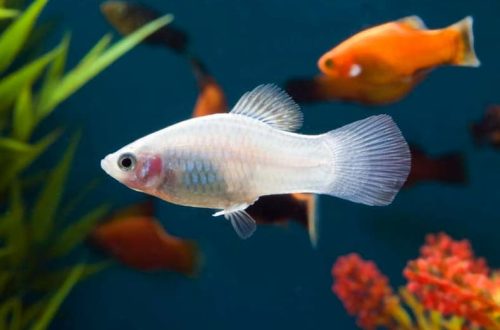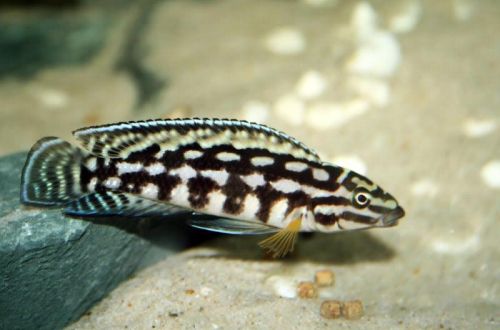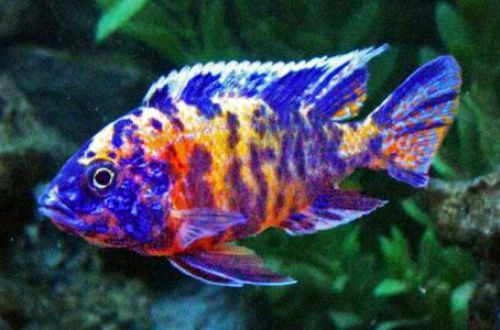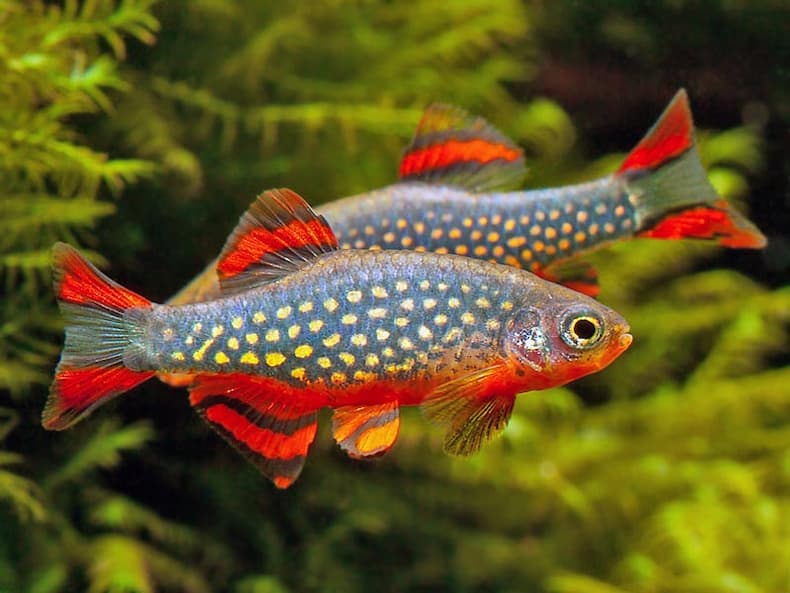
Micro-assembly galaxy
Microrasbora Galaxy or Danio Galaxy, scientific name Danio margaritatus, belongs to the Cyprinidae family. Sometimes this species is called Danio margaritatus – Russian-language transcription of the Latin language.

This bright beautiful fish is very popular among aquarists all over the world, although it was discovered relatively recently – only in 2006. When the first images of the new species appeared, many did not believe in the truth of these pictures, believing that they had carefully worked on the photographs. However, the fish turned out to be really very colorful and a year after its discovery it began to be supplied to all markets. In the early years, massive fishing even led to the threat of extinction of this species in the wild. The situation was saved by mass breeding on fish farms and among aquarists.
Contents
Habitat
It comes from Southeast Asia from the territory of eastern Myanmar and northern regions of Thailand. Inhabits the basin of the Salween River (another name for Thanlwin). The typical habitat is shallow, swampy areas of rivers with dense aquatic vegetation.
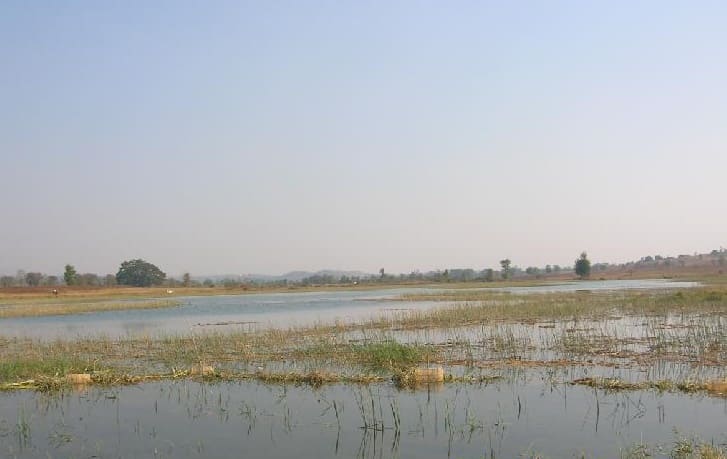
- The volume of the aquarium – from 40 liters.
- Temperature – 20-26°C
- Value pH — 6.0–7.0
- Water hardness – 2–10 GH
- Substrate type – soft dark
- Lighting – subdued
- Brackish water – no
- Water movement – little or no
- The size of the fish is about 2 cm.
- Feeding – any food of suitable size
- Temperament – peaceful
- Content in a group of 20 individuals
Brief information:
Description
Adults reach a length of about 2 cm. In their appearance and miniature size, these fish resemble Rasbora, which is why they were originally called “Microrasbora” and only after a more detailed study were attributed to Danio.
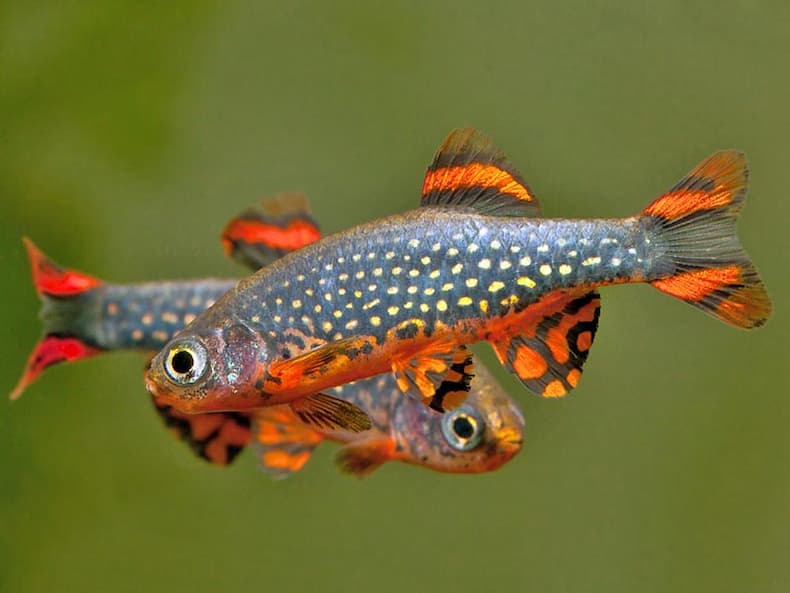
Microrasbora Galaxy has a unique coloration. In males, the body has a steel or dark blue color with a pattern of light yellowish speckles. Reminds the starry sky, so there was an analogy with the galaxy. During the mating season, the abdomen may become reddish. The fins and tail, except for the pectoral fins, have wide red stripes.
Females are less bright. The color of the body is blue-green with less pronounced light specks. Fins with pale red spots. The females are somewhat larger than the males.
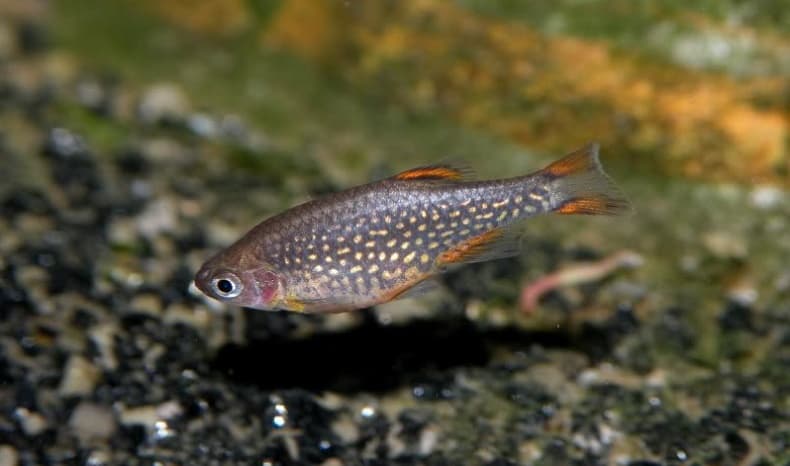
Food
Most popular foods will be accepted in the home aquarium. The diet should be varied and combine dry, frozen and live foods. The quality of the diet directly affects the coloration. The fish feed in the water column and near the bottom, so it is desirable to provide food that sinks to the bottom over time.
Maintenance and care, arrangement of the aquarium
Although these fish are quite tiny, nevertheless, a small group of Danio Galaxy will need an aquarium of at least 40 liters. This is due to the behavior of males, but more on that below. The design uses dark soil, various snags and an abundance of dense aquatic vegetation, including floating ones. To give a more natural look, dried leaves of trees are used, which, in the process of decomposition, give the water a tea shade. Read more in the article “Which tree leaves can be used in an aquarium.” The lighting is subdued.

The key to successful management is stable water conditions within an acceptable range of temperatures, pH and GH. To do this, the aquarium is equipped with a heater and a filtration system. In some cases, a simple airlift filter with a sponge as a filter material is sufficient. Due to the large number of plants, it will be useful to use additional aeration at night to reduce the risk of suffocation in fish. As you know, at night, photosynthesis stops in plants, and they begin to absorb oxygen, releasing carbon dioxide.
Behavior and Compatibility
Active schooling fish. Due to its size, the choice of neighbors should be treated with great attention. Large and even more aggressive species, as well as many catfish, can pose a threat to Microrasbora Galaxy. Good compatibility is achieved only with fish of comparable size, for example, Rasboras, other Danios, and many viviparous species.
Intraspecific relationships are built on competition between males. Rivalry can sometimes seem quite fierce, which is surprising for such a tiny fish. To avoid possible problems, it is necessary to maintain a flock size of at least 20 individuals. In this case, the attention of males will be dispersed to many relatives and weaker individuals will be in relative safety.
Breeding / reproduction
Easy to breed, in favorable conditions, spawning occurs regularly and does not require special preparations from the aquarist. For example, the first case of breeding in an artificial environment occurred in 2006 in England in the aquarium of the Bolton Museum, just two weeks after the wild fish were brought into the country.
During the mating season, the fish scatter several dozen eggs among the plants. Parental instincts are not developed, there is no care for offspring. The incubation period takes about 72 hours. Its duration depends on the temperature of the water. After another 3-4 days, the fry begin to swim freely.
More about breeding Danio
It is worth noting that if the juveniles are not transplanted into a separate tank, then they are unlikely to survive to adulthood. The fry will fall prey to other fish and will have difficulty finding suitable food.
Fry are recommended to be fed with specialized powdered feed, suspensions. Live brine shrimp nauplii are a good choice.
How to care for caviar and fry Danio
Fish diseases
In a balanced aquarium ecosystem with species-specific conditions, diseases rarely occur. Often, diseases are caused by environmental degradation, contact with sick fish, and injuries. If this could not be avoided and the fish shows clear signs of health problems, then medical treatment will be required. Read more about symptoms and treatments in the Aquarium Fish Diseases section.
FishBase Scientific Data Source



